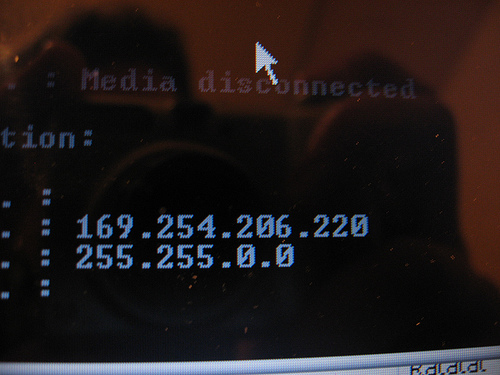IP Addresses and Europe’s Internet Famine

The featured image is sourced from Flickr.
By 2015, the average number of internet devices per person is expected to grow to seven. And guess what, we don’t plan to stop there. There are policies that have already been approved by major stakeholders that suggest that all those trillions of IP address would not be enough. More and more companies are investing in the mobile computing sector. Google, Ubuntu, Apple, Lenovo and Microsoft, to name a few of the major players, are all trying to take a slice out of the pie by continually developing and updating customized operating systems and devices. Competition is fierce and manufacture rates are incredible. The competition between Android powered tablets, iOS devices and others are driving a commercial competition that is hard to match in history. Needless to say this means more and more internet connected devices that need IP addresses.
The demand of internet real-estate is booming, and we are running out of land. It is hard to imagine running out of something that is virtual, but facts suggest Europe is about to deplete its share of IP addresses. In 1980, when IPv4 first came into use, experts believed it would provide for the internet needs of the whole world. Back then, computers were big, immobile, expensive and slow. The only real use of computers was for organizations and professional programmers.
As the digital age picked up momentum, consumers preferred mobility over anything else and so came the world of smartphones and tablets resting on wireless connectivity. Today the average person has two digital devices connected to the internet – meaning that some people have far more than two! This number is almost double when only developed countries are considered. Clearly, we are already feeling a need for more IP addresses.
The current system we use, called IPv4, has total unique addresses of 4.2 billion. The latest system – IPv6 – was released only six months ago, and it lets a whopping 340 trillion trillion trillion devices connect to the internet with unique addresses. At the moment – just like in the 1980s – this might seem like an inexhaustible source of supply, but this may be far from truth.
Other than providing a seemingly inexhaustible supply of IP addresses, IPv6 addresses a number of issues. IPv6 uses IPsec an effective security encoding that has stood the test of time. This system is also more efficient which will result in faster internet speeds and communications. Better security, faster speeds and unlimited IPs –it seems IPv6 takes care of all our problems.
The Internet of Things (IoT) aims to develop policies whereby all your objects from clothes to household furniture and equipment will be directly connected to the internet. So, if you run out of orange juice, your refrigerator will order some for you. As the name suggests, the Internet of Things will connect all the things you own, each with its unique IP address. The European Commission has already produced a Plan of Action document while the European Union has approved Internet of Things Privacy Framework.
Perhaps this still at least a decade or so away, but how will we manage to smoothly shift from IPv4 to IPv6? Experts expect some period of coexistence of the two systems via a technique called tunnelling. IPv6 runs on new technology and physical hardware needs to be replaced – thus, transition will be slow. Companies like Microsoft and Google are already on the new system; Internet Service Providers (ISP) will take more time to transfer. Best of all, as users we do not have make any effort to go on the new system! Let us see how many decades it takes for this pool to dry up – the clock has just started ticking.
